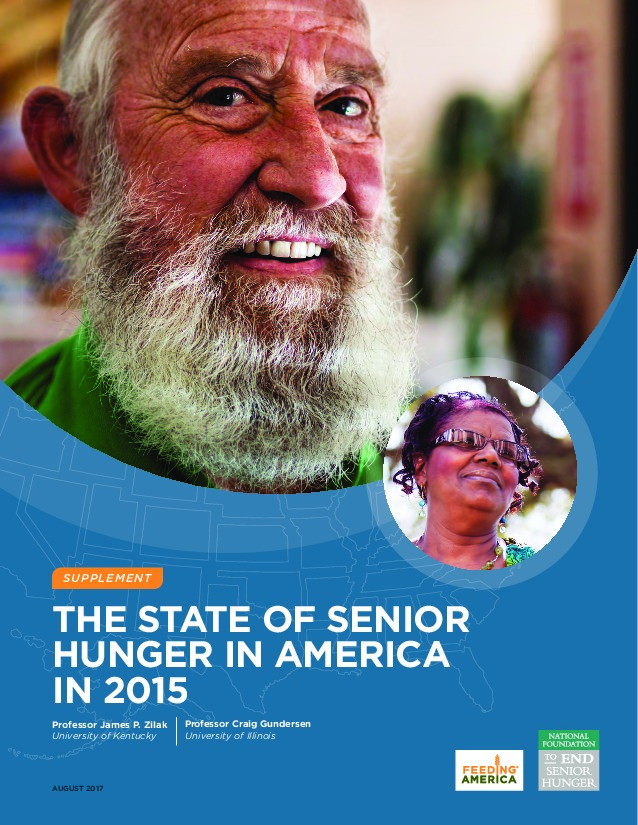This annual report for calendar year 2015 demonstrates that seniors continue to face serious challenges despite a recent slight decline in food insecurity.
Specifically, in 2015 we find that: (1) 14.7% of seniors face marginal food insecurity, 8.1% face food insecurity and 3.1% are very low food secure. This translates into 9.8 million, 5.4 million, and 2.1 million seniors, respectively; (2) From 2014 to 2015, there were statistically significant declines in the proportion of seniors facing both marginal food insecurity and food insecurity. However, there was no change in those facing very low food security. These declines were most pronounced among those living in metro areas, African Americans, Hispanics, and younger seniors; (3) Compared to 2001, the fraction of seniors experiencing marginal food insecurity, food insecurity, and very low food security has increased by 37%, 53%, and 121%. The number of seniors in each group rose 109%, 135%, and 250% which also reflects the growing population of seniors. and (4) Continuing with historic trends documented in prior reports, we find that marginal food insecurity is greatest among those living in states in the South and Southwest, those who are racial or ethnic minorities, those with lower incomes, and those who are younger (ages 60-69).
Research
SeniorsPDF Thumbnail
